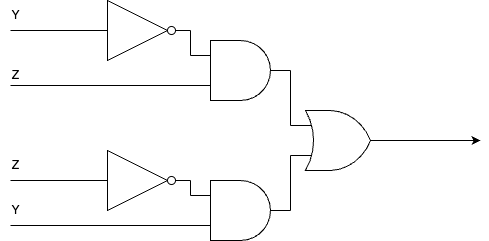Assignment-1
Define what a Turing machine is.
- Turing machine is the abstract model of all computers.
- A Turing machine consists of a tape divided into cells, a moving read/write head, a state register storing the state of the Turing machine.
What is a UTM?
- UTM is a Turing machine that could simulate all other Turing machines.
- Describe the seven levels of transformations of a computer system.
- The seven levels of transformations in a computer system represent the progression from identifying a problem to the physical realization in a device. It starts with understanding the problem and formulating an algorithm, then translating it into a program. The program is mapped to an instruction set architecture, which is further implemented in a microarchitecture. At a lower level, the microarchitecture is translated into circuits, and finally, these circuits are realized in physical devices.
Explain the fetch-decode-execute cycle of the von Neumann Architecture.
- the control unit fetch the next instruction from the memory
- the instruction is decoded into a language that the ALU understands
- data operands are fetched from the memory into the registers inside CPU
- the ALU executes the instruction and places the result into the registers or memory
- Given 8 bits, represent the numbers +53 and -109 into binary using the following approach: 1) Signed-magnitude; 2) One’s complement; 3) Two’s complement.
- +53:
- Signed-magnitude: 00110101
- One’s complement: 00110101
- Two’s complement: 00110101
- -109
- Signed-magnitude: 11101101
- One’s complement: 10010010
- Two’s complement: 10010011
- Convert -57.625 into binary using 32 bits floating number representation. Show your steps.
- -57.625 in binary using 32 bits floating number representation:
- 1100 0010 0110 0110 1000 0000 0000 0000
- Consider two hexadecimal numbers: x434F4D50 and x55544552. What values do they represent for each of the five data types shown?
| x434F4D50 | x55544552 | |
|---|---|---|
| unsigned binary | 0100 0011 0100 1111 0100 1101 0101 0000 | 0101 0101 0101 0100 0100 0101 0101 0010 |
| 1's complement | 0100 0011 0100 1111 0100 1101 0101 0000 | 0101 0101 0101 0100 0100 0101 0101 0010 |
| 2's complement | 0100 0011 0100 1111 0100 1101 0101 0000 | 0101 0101 0101 0100 0100 0101 0101 0010 |
| 207.302 | ||
| COMP | UTER |
- The following Turing Machine is supposed to count in base 2. Fill in the missing rules.
json
{
"name": "Binary Increment",
"max_state": 25,
"symbols": "xyzabc01$@",
"tape": "100",
"position": 2,
"rules": [
[ 0, "#", "1", 1, "R" ],
[ 0, "0", "1", 1, "R" ],
[ 0, "1", "0", 0, "L" ],
[ 1, "#", "#", 0, "L" ],
[ 1, "0", "0", 1, "R" ],
[ 1, "1", "1", 1, "R" ]
]
}
Show that
- Using truth table; (5 points)
- Using Boolean identities; (5 points)
a. Write the Boolean expression in sum-of-products form.
b. Write the Boolean expression in product-of-sums form.
c. Simplify the sum-of-products form using Boolean identities;
d. Draw the logical circuit diagram for the simplified Boolean expression;

- Simplify the above Boolean expression using K-MAP.
| 1 | 1 | 0 | 0 | |
| 0 | 0 | 1 | 1 |

